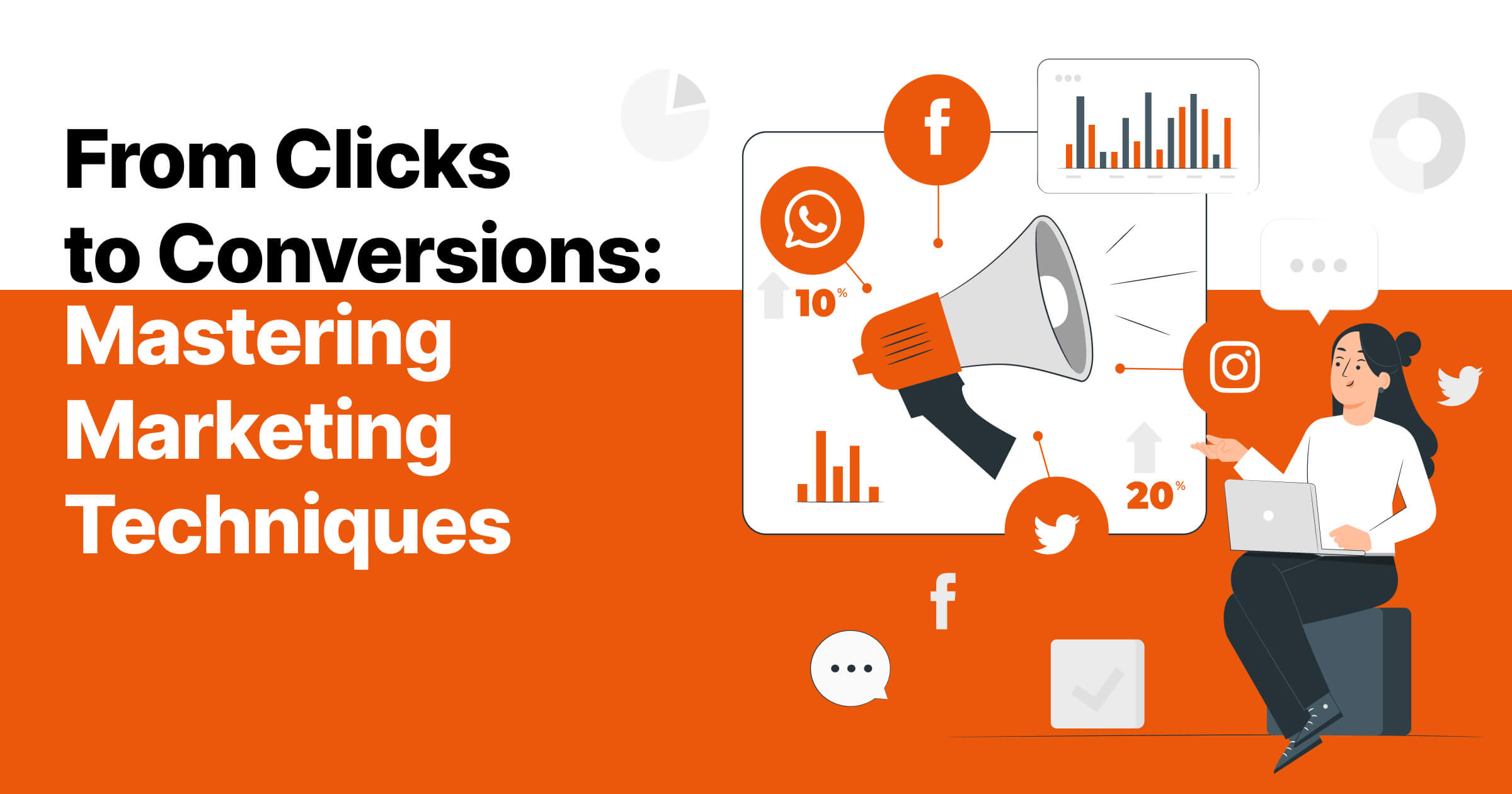Table of Contents

The budget for massive ad campaigns isn’t always there. But that doesn’t mean your agency has to settle for crickets! Affiliate, reciprocal, and viral marketing strategies are smart alternatives.
Let’s break down three powerful online marketing techniques:
- Affiliate Marketing: Partner with other businesses to display your links on their site, driving traffic to yours.
- Reciprocal Marketing: Exchange promotions with complementary businesses to reach each other’s audiences.
- Viral Marketing: Create highly shareable content designed to spread like wildfire across social media.
Affiliate Marketing
Affiliate marketing refers to a relationship between two or more brands, the merchant and affiliates, in order to generate traffic and sales for the merchant’s website. This is often done by placing links on an affiliate’s website that direct visitors to a complementary product or service on the merchant’s website.
The objective of affiliate marketing is to generate an increase in traffic, taking advantage of the audience available to the affiliate. With this increase in traffic, the merchant will be able to achieve their goal of generating more leads from the increased volume of traffic and stand a better chance of closing more sales.
A payment or fee structure is usually agreed upon in this type of marketing, as a merchant will pay a commission to the affiliate for the increased traffic that is directed towards their own website.
So how can you use affiliate marketing in your business? Well, it’s simple! As soon as you have discovered a product or company that is complementary to your brand, discussing a partnership should be straightforward as long as the commission structure is fair. Do not forget to choose a complementary brand that has access to an audience of the right size to serve your marketing objectives. An audience that is too small will not yield the expected results, and an audience too large will translate into a commission fee that exceeds the marketing budget.

Shifting Focus in Affiliate Marketing
Affiliate marketing is evolving, driven by innovations and strategic partnerships between brands. It’s not just about linking anymore; it’s about building connections and leveraging advanced tools to foster growth and reach. Here’s how the landscape is shifting:
🧠Adapting to AI and Search Landscape Changes
The affiliate marketing landscape is shifting quickly. With AI transforming content creation and potential changes to search engines on the horizon, affiliates must stay nimble. Strategies need to flex as algorithms evolve and new players enter the search space. The key is optimizing approaches to rank highly organically no matter the conditions.
🤝Unified Approach to Partnerships
Partnerships are moving beyond isolated arrangements between affiliate and brand. Savvy companies are taking an integrated stance, with affiliate marketing spanning across departments. This unified effort enables multifaceted partnerships that tap into networks more comprehensively.
🚀Collaboration Beyond Conventional Methods
Think beyond the typical affiliate relationship. Creative collaborations are rising, like co-created content, joint webinars, and even revenue-sharing models. These incentivize partners while providing a more rounded experience for audiences.
🌟Influencer Marketing’s Rising Role
Micro and nano-influencers have serious potential, offering cost-effective outreach to engaged niche audiences. Their authenticity fosters recognition, engagement and loyalty – making them powerful affiliate marketing assets.

🧩Content Diversification for Audience Connection
Diversified content is crucial to engage audiences throughout their buyer’s journey. Tailoring messaging and content to platform behaviors ensures relevance across all stages.
📊Data-Driven Success
Data remains essential, with metrics like CTR and CVR identifying high-performing partners and honing ROI. A data-driven approach is critical.
🌱Sustainability and Ethics in Focus
With values top of mind, ethical and sustainable practices build trust and loyalty. Transparency that aligns with your audience is key for long-term success.
🌎Globalization and Niche Exploration
Global affiliate campaigns unlock new markets, making niche trends worth tracking. Home in on rising spaces like health, eco-consciousness and home improvement.
Affiliate marketing presents a valuable opportunity for small businesses to expand their reach and drive growth. By strategically partnering with relevant brands and leveraging their audiences, companies can boost traffic, leads, and sales through these mutually beneficial affiliate relationships.

Key Metrics for Enhancing Affiliate Marketing Strategies
To ensure the success of your affiliate marketing efforts, focusing on specific metrics and KPIs is crucial. Here’s a detailed look at the essential metrics for digital marketers aiming to optimize their affiliate programs:
| Metric | Description |
|---|---|
| Growth Rate of Affiliates | Tracks the increase in the number of active affiliates over time. High growth indicates a healthy affiliate program attracting new partners. |
| Audience Engagement | Measures how actively an affiliate’s audience interacts with their content. High engagement rates suggest a loyal and receptive audience for promotions. |
| New vs. Returning Customers | Compares first-time buyers to repeat customers generated via affiliates, highlighting the affiliate’s ability to attract new or retain customers. |
| Average Order Value (AOV) | Calculates the average spend per transaction facilitated by affiliates. A higher AOV suggests more profitable conversions. |
| Customer Lifetime Value (CLV) | Represents the total revenue a business can expect from a single customer account. It helps understand the long-term value of customers acquired through affiliates. |
| Effective Earnings Per Click (eEPC) | Indicates the average earnings generated for every 100 clicks through an affiliate link. A crucial metric for assessing the financial efficiency of traffic from affiliates. |
| Conversion Rate (CR) | Shows the percentage of affiliate-referred visitors who take a desired action (purchase, sign-up). Higher CR indicates effective affiliate promotion and targeting. |
| Click Traffic | The volume of users clicking on affiliate links, reflecting the level of interest and engagement in the promoted products or services. |
| Revenue Generated per Affiliate Segment | Tracks the revenue contributions from different affiliate segments, allowing for targeted optimization strategies. |
| New Revenue and Customers | Monitors the fresh income and customer base expansion attributed to affiliate marketing efforts, essential for gauging the effectiveness of acquiring new markets. |
| Recurring Revenue | Assesses the steady income generated from repeat purchases by customers acquired through affiliates, indicating the sustainability of the affiliate’s contributions. |
| Reversed Sales Rate | The percentage of transactions initiated through affiliates that get canceled or refunded, providing insights into the quality and satisfaction level of the affiliate-driven sales. |
| Top-performing Affiliate Partners | Identifies the affiliates driving the most traffic, conversions, or revenue, highlighting key contributors to the program’s success for further nurturing. |
By meticulously tracking these metrics, digital marketers can gain valuable insights into their affiliate program’s performance, identify areas for improvement, and strategize effectively to boost overall success and ROI.

Reciprocal Marketing
Reciprocal Marketing involves a mutual agreement between two parties to promote each other’s products or services. This strategy is grounded in the principle of mutual benefit, where each participant gains exposure to the other’s audience, potentially leading to increased traffic, customer-base expansion, and enhanced brand recognition.
Reciprocal Marketing: A Strategic Overview
Reciprocal marketing goes beyond mere cross-promotion; it’s about creating synergistic partnerships that deliver mutual benefits. This approach can be particularly advantageous for businesses looking to expand their reach without incurring high marketing costs. Through strategic collaborations, companies can leverage each other’s strengths and audiences to achieve their marketing objectives more efficiently.
Systematic Approach and Content Collaboration
Adopting a systematic approach to reciprocal marketing, especially in content-related activities, offers a cost-effective strategy for brands aiming to enhance their online presence. Focusing efforts on high-impact content and leveraging the Pareto principle ensures that resources are allocated towards efforts that yield the most significant results. Establishing a content network through guest posting and backlink exchanges with complementary businesses can improve domain authority and drive meaningful conversions.
Success Stories in E-commerce
Several e-commerce brands have masterfully leveraged reciprocity marketing by offering direct value to their customers. For example, Blue Bottle Coffee enhances customer rapport and positions itself as an industry expert by providing free educational content like brew guides. This not only fosters loyalty but also subtly promotes their products within the educational material, increasing search engine visibility and driving targeted leads to their website.
Another innovative example is True&Co., which employs a “try before you buy” service, allowing customers to test a product at home risk-free. This approach builds immediate trust and rapport, encouraging customers to make a purchase based on their positive trial experience. Such strategies underscore the effectiveness of reciprocity marketing in building long-term customer relationships and driving repeat purchases.
Tailoring Strategies to Customer Needs
Understanding and catering to the unique needs of your target audience is pivotal in designing effective reciprocity marketing strategies. Whether offering material value, like discounts and loyalty points, or emotional value, such as personalized thank-you emails and positive customer journey experiences, knowing what resonates with your audience is key. Personalization enhances the perceived value of your offering, making the gesture more impactful and memorable. Employing customer feedback surveys can provide direct insights into customer preferences, allowing for more tailored and effective reciprocity marketing tactics.
SaaS Sector Implementations
The SaaS sector offers compelling examples of reciprocity marketing through free trial offerings. Spotify and Amazon Prime exemplify how providing full access to premium features for a limited time can convert free users into paying customers. Experiencing the product’s full value firsthand incentivizes users to upgrade, illustrating the potent conversion power of reciprocity marketing within the SaaS industry.
In conclusion, by integrating these strategies and examples into the reciprocal marketing section, businesses can gain a deeper understanding of how to effectively implement and benefit from this approach. Reciprocal marketing not only facilitates the expansion of brand reach but also enhances customer engagement and loyalty through strategic partnerships and value-driven offerings.

Key Elements to Include in a Reciprocal Marketing Strategy
| Element | Description |
|---|---|
| Selection of Partners | Choose partners with complementary businesses, ensuring the partnership offers mutual value to both audiences. |
| Clear Objectives | Define specific goals for the partnership, such as increasing brand awareness, driving sales, or boosting social media engagement. |
| Content Sharing and Promotion | Decide on the types of content to share and promote across each other’s platforms, which could include social media posts, blog articles, newsletters, or joint webinars/podcasts. |
| Cross-Promotion Methods | Establish the channels and methods for promoting each other’s brands, like email marketing, social media, website links, or physical marketing materials. |
| Communication and Collaboration | Maintain open communication and regular check-ins to adjust strategies as needed, ensuring both parties are satisfied with the partnership’s progress. |
| Tracking and Analytics | Use tools to track the effectiveness of reciprocal marketing efforts, analyzing data like website traffic, conversion rates, and engagement metrics to gauge success and identify improvement areas. |
| Ethical Considerations and Transparency | Be transparent about the partnership’s nature with your audience, adhering to ethical marketing practices to maintain trust and ensure compliance with advertising standards. |
| Long-Term Relationship Building | View the strategy as an opportunity for building lasting relationships with other businesses in your ecosystem, fostering a network that can provide ongoing mutual benefits. |

Viral Marketing
Viral marketing is different from both affiliate and reciprocal marketing in that the manner in which traffic is directed to a merchant’s website is not static, but dynamic in nature. To elaborate on this, viral marketing focuses on individuals sharing a marketing message to an audience in an attempt to create a viral message, rather than relying solely on website links. There are many ways in which these individuals are motivated to share the content, by offering incentives, with competition-based prizes, or exposure for their own social media accounts.
This type of online marketing effectively works like an E-version of word-of-mouth, as individuals are encouraged to share a brand’s message widely through channels such as Instagram Stories and Facebook. An example of viral marketing can be seen in competitions that require individuals to share a brand’s Instagram post to their Story and tag a friend to stand a chance to win a prize, with the winner selected at random.
In order to guarantee the success of this technique, it is important to keep in mind certain elements that can help a message go viral, such as a strong emotional resonance, a recognizable name or a just cause, a good understanding of the audience and their responses, simplicity in the message, and the ability to reach the audience.
Therefore, in order to make viral marketing successful in your business, you need to create a message with a recognizable and memorable tagline, with content that creates excitement in the audience and encourages them to spread awareness of this message to others. Making the message easily shareable through a hashtag or a shareable post is a good way to give the audience the tools to do your marketing for you.
Psychological Triggers: Crafting Content That Connects
Understanding the psychological triggers that drive content to go viral is crucial for marketers aiming to create impactful viral marketing campaigns. These triggers include:
- Emotion: Content that evokes strong emotional responses, such as happiness, surprise, or even anger, is more likely to be shared.
- Social Currency: People share content that makes them look good to others, such as insightful articles or exclusive offers.
- Practical Value: Useful content that offers value, like how-to guides or life hacks, gets shared as it helps others.
- Storytelling: Stories that are engaging and relatable, or those that include a compelling narrative, encourage sharing as they connect on a personal level.
- Public Visibility: Content that’s already being shared widely enjoys further sharing due to the “bandwagon effect.”
By integrating these psychological insights into content creation, marketers can significantly enhance the likelihood of their messages going viral, creating a natural and widespread dissemination of the brand’s message.
Risk Management: Navigating the Perils of Viral Marketing
Viral marketing comes with its set of risks, including negative publicity or misinterpretation of the message. To effectively manage these risks:
- Monitor and Prepare: Constantly monitor the response to your viral content and have a crisis management plan ready.
- Message Clarity: Ensure your content clearly communicates its intended message to minimize misinterpretation.
- Audience Understanding: Deep knowledge of your audience can prevent content from being perceived negatively.
- Ethical Considerations: Stay ethical in your marketing practices to avoid backlash. This includes respecting privacy and avoiding manipulation.
- Feedback Loop: Implement a feedback mechanism to gauge audience reaction early and adjust your strategy accordingly.
Balancing the creative appeal of viral content with these risk management strategies ensures that viral marketing campaigns achieve their objectives while minimizing potential downsides.

The Power of Smart Marketing
The budget for massive ad campaigns isn’t a given, but that doesn’t mean settling for lackluster results. Affiliate, reciprocal, and viral techniques offer agencies clever ways to expand reach and tap into new markets.
The key lies in strategic thinking. It’s about finding the right partners, understanding your audience deeply, and harnessing the incredible potential of shareable content.
More on Marketing Strategies
How do you create a digital marketing strategy?
Begin by building buyer personas, identifying goals and necessary tools, evaluating existing digital channels and assets, and planning your owned, earned, and paid media campaigns.
What role does SMS marketing play in digital marketing?
SMS marketing is a direct and cost-effective way to reach customers, with a high open rate compared to emails. It’s used for one-off campaigns like sales or part of automated series.
Why is precision targeting important in digital marketing?
It allows you to use data to understand and communicate with specific segments of your audience more effectively, personalizing your messages to encourage sales.
What are some popular digital marketing strategies?
Strategies include SEO, email marketing, influencer marketing, affiliate marketing, Google Ads, social media marketing, content marketing, and video marketing.
How does SEO contribute to a marketing strategy?
SEO increases your website’s presence in search engines, driving traffic and generating leads by creating valuable content and optimizing for keywords and user experience.
What is the difference between inbound and outbound marketing?
Inbound marketing attracts interested customers to you, while outbound marketing involves getting in front of customers actively, even if they weren’t looking for your products or services.
How do social media marketing strategies improve business visibility?
With billions active on platforms like Facebook and Instagram, social media marketing can increase visibility, build connections, drive traffic, and increase sales by targeting where your audience hangs out the most.
What is the importance of email marketing in digital strategies?
Email marketing offers a direct line of communication with your target audience, not influenced by algorithms, making it crucial for promotional, transactional, and informative content.
How do you ensure your content marketing is effective?
By creating great content that introduces customers to your brand and providing valuable information that solves their problems or answers their questions.
What strategies can be used to drive free traffic to a website through social media?
Promote blog content, make it easy for users to share your content, and post when your audience is most active to increase visibility and engagement.
How does delighting customers contribute to marketing success?
Delighting customers by exceeding their expectations with quality products and reliable customer service fosters long-term relationships and builds brand loyalty.
Why is understanding your target audience critical in marketing?
Knowing your audience allows you to create compelling messages and products tailored to their needs, preferences, and challenges, influencing which marketing channels to leverage.
